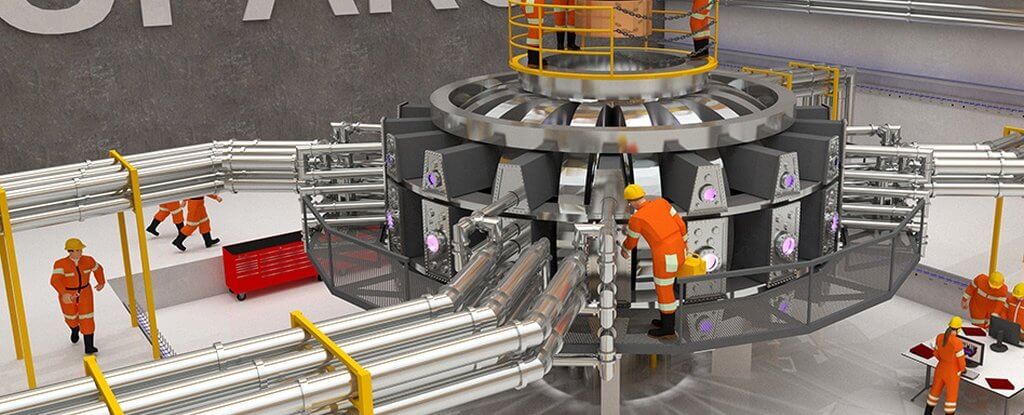
Fusion energy is the dream of scientists and energy companies may soon become a reality. Of physics at the Massachusetts Institute of technology (MIT) and the Commonwealth Fusion Systems has declared readiness to create a working fusion reactor within the next 15 years.
At the heart of obtaining fusion energy is nuclear fusion. Unlike nuclear fission, which is a process of splitting an atomic nucleus into two (more rarely three) nuclei with similar masses, in which the energy is produced, nuclear fusion produces energy in the synthesis (fusion) of the heavier atomic nuclei from lighter ones (e.g. hydrogen into helium). If in the first case we are talking about the principles of work, for example, nuclear power plants, in the second we are talking about processes, such as those that occur in the interiors of stars, including inside our Sun. In nuclear fusion can be produced heat of several hundred million degrees Celsius. And this heat, the researchers say, can be turned into huge amounts of electricity.
Development of fusion reactors, scientists are yet in the 40-ies of the last century. But every time science is faced with the same challenge on the way for clean energy – it is very difficult to create a reactor capable of withstanding the calculated load, not to mention how to beat.
At the moment the most promising design of fusion reactor is a tokamak – toroidal chamber with very powerful magnets. These magnets create within the chamber a very strong magnetic field holds the hot plasma and thus ensures the conditions necessary for the occurrence of controlled thermonuclear fusion.
Of physics at the Massachusetts Institute of technology, jointly with Commonwealth Fusion Systems are going to develop a compact tokamak SPARC, capable of generating 100 megawatts of thermal energy. This thermal energy is not converted into electricity but will be used to create a 10-second pulse energy level which is enough to power a small town. If the experiment is successful, scientists will create a larger reactor that generates 200 megawatts.
Based on a compact tokamak will be a very powerful superconducting magnets made of oxide of yttrium-barium-copper (YBCO), capable of generating a record magnetic field strength. For example, YBCO-magnet created National High Magnetic Field Laboratory, creates a force field to 32 Tesla. In addition, high-temperature superconductor capable of operating at a high temperature of 77 Kelvin (-196,15 degrees Celsius), while most superconductors of other materials operate at temperatures close to absolute zero (-273 degrees Celsius).
Not only MIT is currently engaged in finding a solution to the problems of fusion energy. For example, in December 2017, it was reported that the international thermonuclear experimental reactor ITER (International Thermonuclear Experimental Reactor, ITER) is built in half. According to the CEO of the project Bernard bigot, the installation is planned to start in 2025. Test ideas that can be applied to larger reactors, is also a British company, Tokamak Energy.
At MIT found a way to harness the energy of stars
Nikolai Khizhnyak